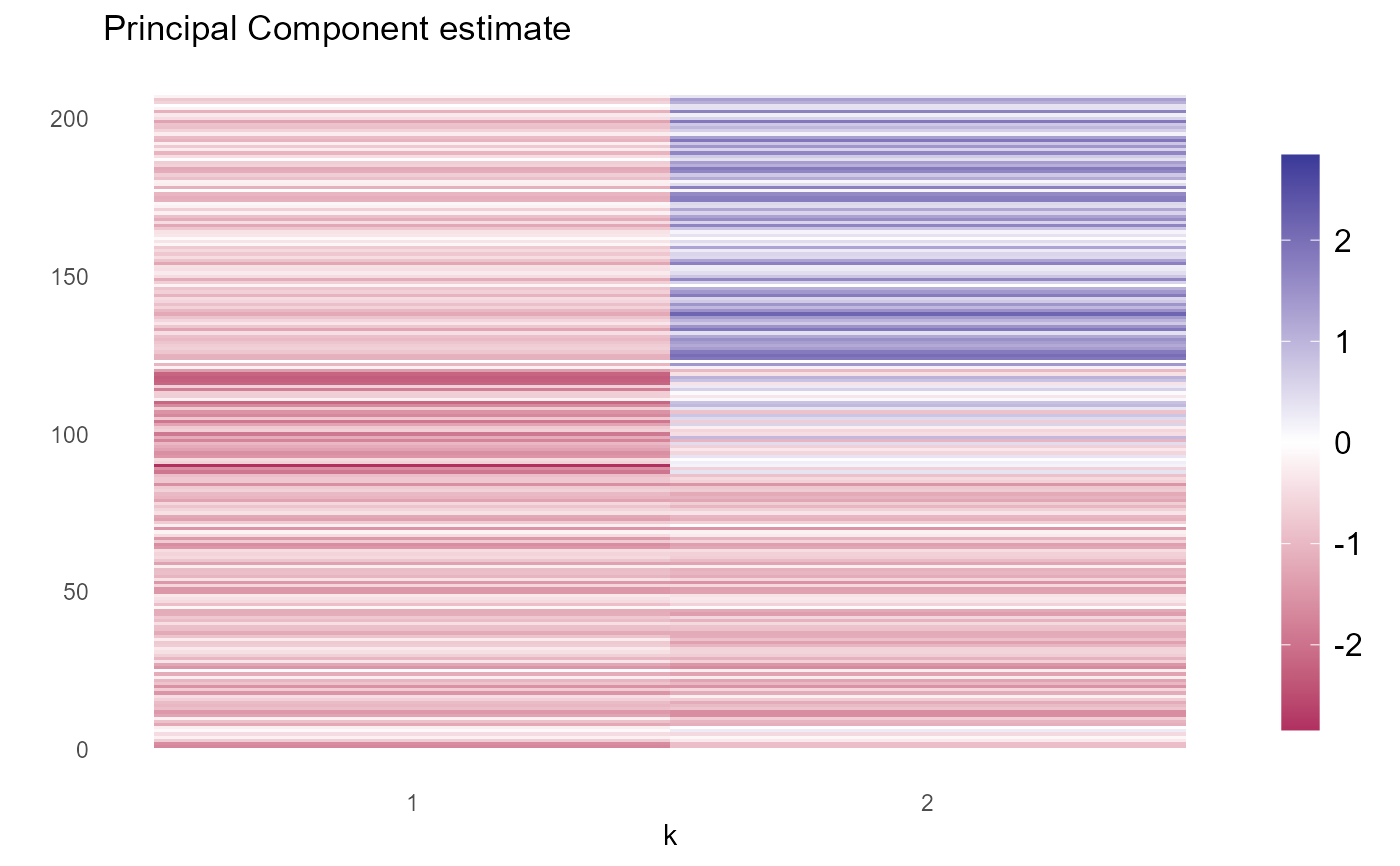Check whether local factors are present and find the rotation of the loading matrix with the smallest l1-norm.
Source:R/local_factors.R
local_factors.Rdlocal_factors tests whether local factors are present and returns both the Principal Component estimate of the loadings and the rotation of the loadings with the smallest l1-norm. It also produces graphical illustrations of the results.
Value
Returns a list with the following components:
has_local_factorsA logical equal toTRUEif local factors are present.initial_loadingsPrincipal component estimate of the loading matrix.rotated_loadingsMatrix that is the rotation of the loading matrix that produces the smallest l1-norm.rotation_diagnosticsA list containing 3 components:RRotation matrix that when used to rotateinitial_loadingsproduces the smallest l1-norm.l1_normVector of lengthrcontaining the value of the l1 norm each solution generates.sol_frequencyVector of lengthrcontaining the frequency in the initial grid of each solution.
pc_plotTile plot of the Principal Component estimate of the loading matrix.rotated_plotTile plot of the l1-rotation of the loading matrix estimate.small_loadings_plotPlot of the number of small loadings for each column of the l1-rotation of the loading matrix estimate.
